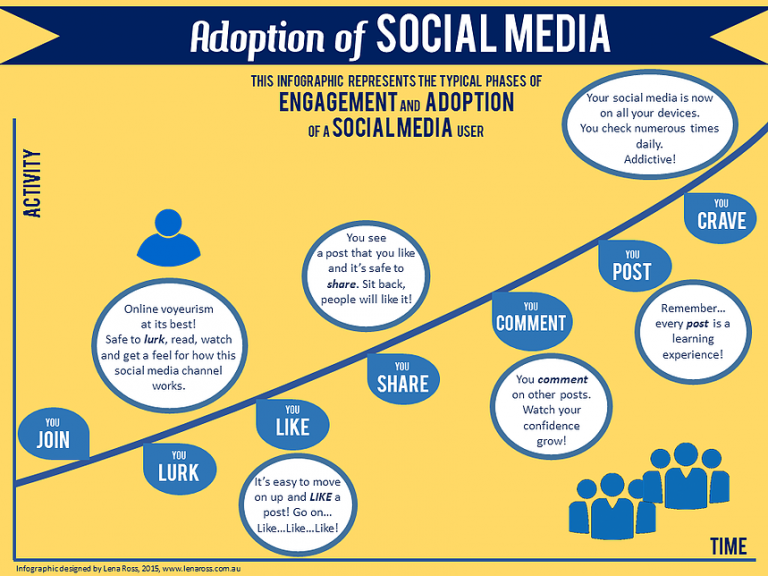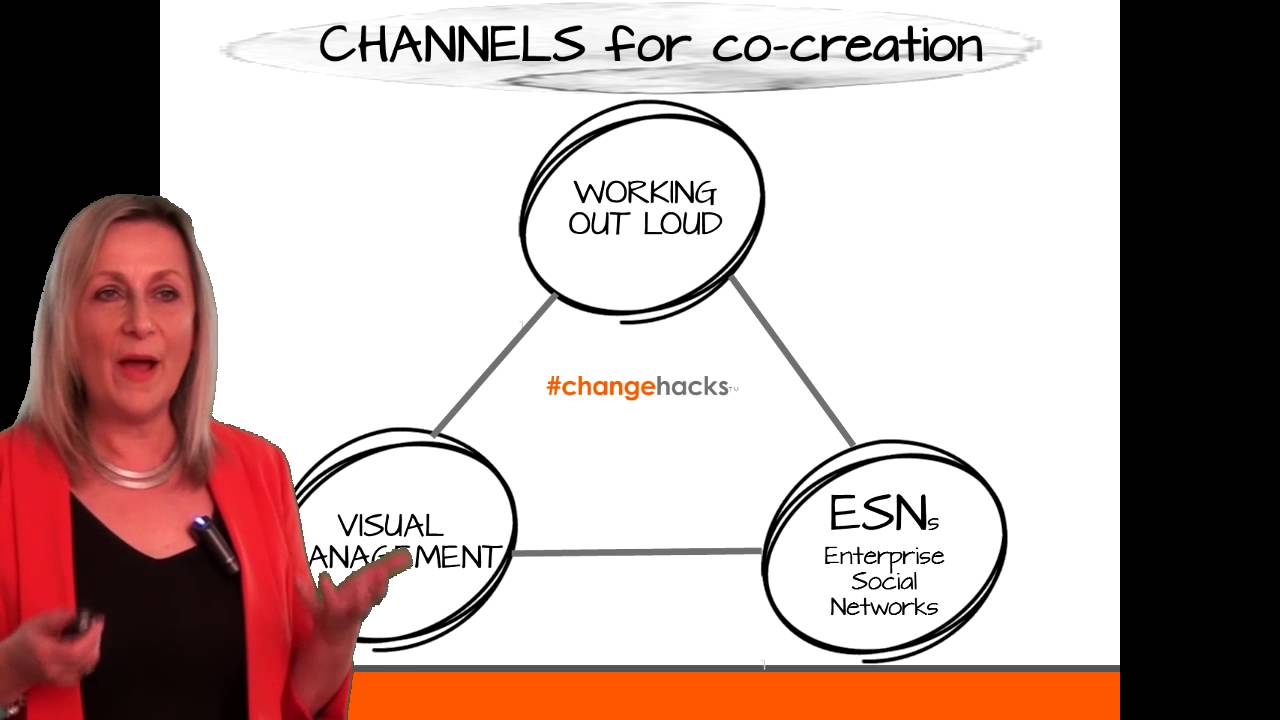
Change hack 4: Helping people move up the social media adoption curve [Change hacks series]
This is part 4 of a series of articles on ‘change hacks’ from expert change management speaker and facilitator Lena Ross.
In my one-on-one coaching sessions, the conversation often leads to leveraging social media. There’s a plethora of information out there, on the internet and social media itself, on how to promote your personal brand or professional profile online, as well as on using these channels in the workplace to improve communication and ‘work out loud’. However, in these conversations, I find myself referring back to an infographic I developed to encourage Yammer participation in one of my past roles.
Many theoretical change models express transition and adoption as a curve. So, in the spirit of a typical change curve, my infographic represented the phases of adoption and engagement of Yammer in the workplace. Since then, it became quite apparent that this curve applies to almost any form of social media, such as LinkedIn, Twitter, Instagram, and the list goes on. So, I’ve revised it with this broader context in mind.
The journey up the curve
The steps are typical ones; many of you may skip a step or two as you move up the curve. Let’s imagine this scenario is for LinkedIn:
You JOIN – You’ve created your profile. You are sending requests to connect and building your connections. Make sure you have a profile pic before you proceed. Welcome to LinkedIn!
You LURK – This is online voyeurism at its best. You lurk and it’s safe. You watch, read, save images and links, and have a good feel for how LinkedIn updates work.
You LIKE – Liking a post or share is safe way to come out of the lurking phase. This is an easy step, but an important one as you’ve started to engage. Keep on liking, liking and more liking.
You SHARE – You see a post or two that you like and it’s safe to share. Keep on sharing and watch the ‘likes’ come your way now. Insights from neuroscience have shown that the reward centre in our brains is activated when we receive a ‘like’ on social media. Enjoy it, repeat it, and take it to the next level.
You COMMENT – You start commenting on other people’s posts, or passing a comment on the post you are sharing. This is where engagement really steps up, as does your presence on LinkedIn.
You POST – This is your post. You found this link, photo or article that you are posting, or it could be your own blog or photo. You initiated this. Keep posting regularly. Your followers will start to look out for your material. Every post is a learning experience. Some will attract heaps of likes and comments, some will be sparse. Once you start posting, read one or two of the many posts about when and how to post on LinkedIn to maximise traffic and readership.
You CRAVE – More dopamine! You now have LinkedIn on all your devices because missing a post or activity is not on your agenda. You check in numerous times each day, even on the weekend or when you’re on holidays. You love finding relevant stuff to post. Building social capital is addictive…
From lurking to craving in the workplace
Asking our people to get on board with social media in the workplace is often a change program in itself, relying on behaviour change. Here are some tips on how to encourage your team members to move up the curve and engage:
Model the behaviours you want to see
- If you want your followers and/or team members to get onto your social media channel, get yourself on board fast and be the ‘early adopter’ of your group who moves up the curve quickly.
Provide regular and immediate online encouragement
- As soon as your team members, stakeholders and/or impacted users post a comment, be sure to at least ‘like’ it, and follow up with an encouraging comment. By rewarding the behaviour, your new ‘poster’ is likely to post again…and again. Remember that burst of dopamine (a brain buzz) when someone likes your share.
Ensure most of your posts invite comment and feedback
- You want to hear what’s on the grapevine, particularly when there is a great deal of change or uncertainty in your organisation. Social media adopters often find their voice on online forums. By encouraging organic, two-way communication, you may uncover some hidden influencers who can support your change messages. The flip side, of course, is that you could shake up the resisters. See this a positive thing; it’s better than passive resistance and you know what you need to address.
Continue communicating with your team
- Promote stories on how social media channels have helped people get things done faster, so the benefits of productivity will outweigh any perceived challenges.
- Use the infographic in this post to explain a typical journey up the curve. This can be downloaded as an image from here.
If there are ways to improve collaboration with your people during change and uncertainty, what’s stopping you? For additional information please see my website.
Next edition: Change hack 5: Three channels for co-creation you need to know.
Article source: Change hack 4: Helping people move up the social media adoption curve.
Header image source: Social Media apps by Jason Howie is licenced by CC BY 2.0.







